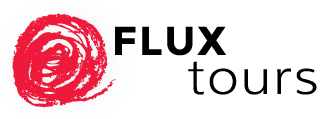Why not use blenders, pots, water kettles, hair-dryers and other “junk” to create noises and turn those into a piece of music (John Cage)? Why not cut up a piano on stage (Dick Higgins and other activists)? Why not piece together large trash and scrap to a sculpture instead of discarding it inconsiderately (Robert Filliou and Jean Tinguely, for instance)? Why not examine the acts of peeling a potato or sweeping a square as a sculptural practice (Joseph Beuys)? Why not seek beauty in the gutter – to involve French Romanticism as instigation (Charles Baudelaire)? And why not “give the commoner an elevated mind, the ordinary a mysterious appearance, the familiar the dignity of the unknown, the finite an illusion of the infinite”? says the old – and obviously still valid – basic programme of Novalis, one of the leading figures in German Romanticism.3 So why not use the aesthetic peculiarities of everyday materials, everyday procedures and everyday situations as an opportunity to contemplate these artistically, as well as experiment with these and accredit their artistic worthiness and artistic faculty? With those and similar questions and respective answers did the transatlantic art movement “FLUXUS” raise some attention in the sixties of the last century. It continued and brought to a head what other ‘art revolutionaries’ thought and did before that, what was in the wind in the sixties in the last century and what is still alive in the high cultures subcultures of today. Fluxus or the activists of the “Situationist International”, for instance, supported, went along with and shaped the rebellion against “the fustiness of 1,000 years” under “the gowns”4 here and elsewhere – the awakening and uproar of the so-called ’68 generation and likewise malcontented in Europe and North America.
The Fluxus movement demonstrated in a blunt way how art by “ingenious amateurs” “without any talent” whatsoever5, and without any artistic “geek-ism” could look like. Instead, they performed critique on art and society with ruse, courage, impertinence and irony. All that with the intention of debunking the so far hidden and the thoughtless, by employing “anti-artistic” tools to take artistic action and cast off fixed technical traditions and thought patterns. EXIT! The artist Wolf Vostell boiled the Fluxus concept down to an essence: “Art = Life, Life = Art”.
Read more: (opens PDF: “FLUXUS, FLUX-tours: EXIT” text by Ulrich Puritz, text only available in German)


